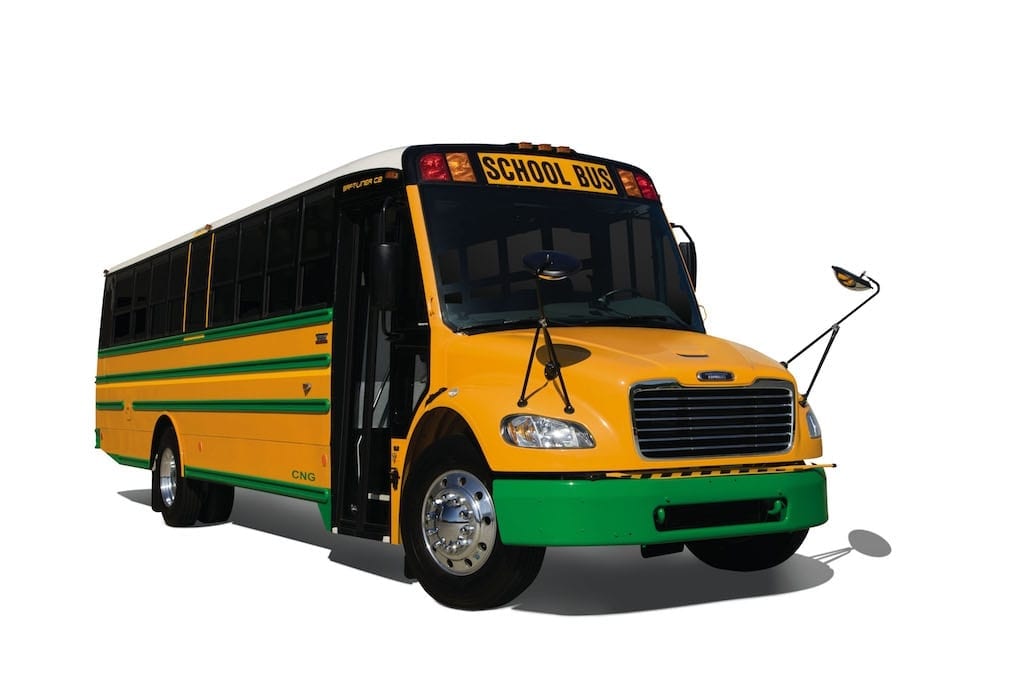No Available and Proven School Bus Powertrain Solution Today Runs Cleaner than Natural Gas
Like millions of school children across America, I spent a good portion of each weekday in the 1970s and 80s on a diesel-powered school bus. My early morning bus ride was a slow, snake-like route through rural Upstate New York that lasted well over one hour just in good weather.
Today across the U.S. 25 million kids ride 480,000 school buses daily to and from school, logging an estimated 5.76 billion miles traveled each year.
Breathing in vehicle particle pollution (including nitrogen oxide, or NOx) from those bus rides increases the risk of asthma, lung cancer, heart disease, and premature death. Today, there are 6.2 million people with asthma under the age of 18 – a rate that’s been steadily increasing since my time on the school bus – and asthma is the leading chronic disease in children. It is also the top reason for missed school days.
Breathing in vehicle particle pollution (including nitrogen oxide, or NOx) from bus rides increases the risk of asthma, lung cancer, heart disease, and premature death.
Fortunately, there is a way to help combat this chilling trend: replace our aging fleet of diesel school buses with new buses powered by clean burning natural gas. And there are new resources to help pay for them.
VW Funds Will Help Diesel School Bus Replacement
As part of its 2016 emissions settlement with the U.S. Environmental Protection Agency (EPA) and the California Air Resources Board (CARB), Volkswagen (VW) will provide $2.9 billion nationwide to put significantly cleaner, lower-polluting vehicles on the road. Multiple states have dedicated a portion of their VW funding for the replacement of older diesel school buses.
So why move to natural gas buses? For starters, no proven commercially-available school bus powertrain solution today runs cleaner than natural gas, and multiple proven, efficient, and strong service-supported natural gas transportation options are available from such popular manufacturers as Blue Bird and Thomas Built Buses.
Natural gas engines are the only zero emission equivalent or near-zero engines that are certified by both the EPA and CARB to perform 90 percent cleaner than their cleanest diesel-burning counterparts. And when powered by renewable natural gas captured from agricultural, food, landfill, or wastewater waste, the result in many cases can be a carbon neutral or even negative product.
Dollar-for-dollar, natural gas vehicles deliver the most cost-effective NOx emissions reductions. Natural gas school buses are up to 95 percent more cost effective than diesel alternatives and 53 percent more cost-effective than limited and unproven electric options.
NGVs Offer Cost-Effective NOx Emissions Reductions
Dollar-for-dollar, natural gas vehicles deliver the most cost-effective NOx emissions reductions. Natural gas school buses are up to 95 percent more cost effective than diesel alternatives and 53 percent more cost-effective than limited and unproven electric options. You can verify for yourself at the U.S. Department of Energy Argonne National Laboratory’s Heavy-Duty Vehicle Emissions Calculator found here.
Natural gas is affordable and sustainable. Natural gas is abundant and domestic. And natural gas is widely available with a well-established and growing infrastructure.
No investment in reducing asthma-producing school bus emissions is as cost effective as natural gas.
I put my own kids back on the school bus this past week. Doing so on new buses fueled by natural gas, we can all breathe easier.


